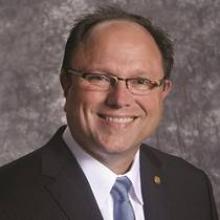Family medicine residents are beginning to consider temporary assignments and more part-time work at the onset of their medical career after graduation, a new survey from Staff Care suggests.
A majority (87%) reported being either “very open” or “somewhat open” to test driving various practice styles and geographic locations by working temporary assignments post residency. Additionally, 15% said that they preferred their first job after residency to be part-time (defined as 30 hour a week or less). The survey of 133 residents was conducted at the 2015 American Academy of Family Physicians (AAFP) Conference for Family Medicine Residents and Medical Students in Kansas City.
One additional point that stood out from the survey is a preference for locum tenens positions. Even though such placeholder positions are not usually available to residents, they ranked sixth as the preferred setting for practice among the surveyed population.
Sean Ebner, president of Staff Care, a temporary physician and advanced practitioner consulting firm located in Dallas, said the findings are all related, as residents are looking at more flexibility in their career choices.
The higher ranking of locum tenens “speaks to [the preference for] flexibility around temporary engagements to work in a variety of settings, a variety of geographies, before immediately settling down,” Mr. Ebner said in an interview.
Perhaps residents are put off by the changing nature of the dynamics of the business side of medical practice. There seems to be an ongoing shift from independent, solo, and small group practices to a growing number of physicians being employed in larger group settings. Such a change brings with it different workforce strategy. Younger physicians are able to consider part-time employment and work-life balance. These conditions lend themselves to more locum tenens capacity.
“A lot of residents are looking at it as a career option,” Mr. Ebner said.
He also said that these considerations are reflective of the financial compensation that residents are seeking.
According to the survey, half are expecting an annual salary in their first job post residency to be $100,000 or less. Thirty-six percent are expecting $101,000-$150,000, while 10% are expecting $151,000-$200,000 and 4% are expecting more than $200,000.
“We’re taking from this that physicians are already baking into their compensation expectations flexibility, diversity of work, those types of things, particularly among women,” who were 65% of the survey respondents, Mr. Ebner said. Women make up the majority of residency programs (AAFP statistics show that 55% of residents in 2015 were women) “and they’re looking at much higher levels” of managing their careers to move to a part-time status at some point, if not right up front, he added.
The other key point Mr. Ebner wanted to stress was that, of the surveyed population, only 4% of those who are finishing their residency in 2016 have accepted a job offer, 20% have interviewed but not accepted a position yet, 57% considered offers but have not been interviewed, and 19% have put little to no time into considering job offers. For all those who were surveyed, 50% said they have put little to no time into considering job offers.
“The knowledge that half of our population sampled are still up for grabs might catch people by surprise, especially at this time in the cycle,” Mr. Ebner said. “It may be that hospitals and firms and groups are anticipating that the population is spoken for, so one of the things that we are taking away from this is that the population in their final residency is still very focused on the core content of their residency and have pushed off or delayed the career elements of post graduation.”
AAFP President Dr. Robert Wergin noted that, while the results were interesting, the low participation provides more of “snapshot” rather than something indicative of any trends. Mr. Ebner did acknowledge the small sample size but believed the results were informative even if they were not statistically significant.
Dr. Wergin also said in an interview that the results were inconsistent with data the AAFP tracks and suggested that the small sample size could be biasing the results.
“When they said these docs would be willing to look into practicing far away or different locums or had an interest in that, we have data that will show over half, 56% of residents, practice within 100 miles of where they train,” said Dr. Wergin of Milford, Neb. “About 40% practice within 25 miles and 20% practice within 5 miles. So where you train … is predictive of where you may end up, certainly at least post graduation.”


